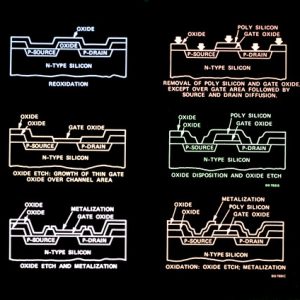
Portable Compact DWDM Test Tools
DWDM allows enormous amounts of data to move across a single fiber, maximizing capacity and helping organizations meet bandwidth demands without laying more fiber. Using specialized OTDR tools with exact DWDM service wavelengths to inspect, test and verify DWDM links prior to and after MUX/De-MUX connections speeds up turn-up and troubleshooting times.
Optical Power Meter
The power meter is one of the most important test devices used in fiber network installation, testing and troubleshooting. It can identify the root cause of failure in a network and help improve bandwidth, performance and reliability.
The optical power meter uses semiconductor detectors to measure the intensity of light in the wavelength range common to fiber optics. They are based on silicon (Si), germanium (Ge) or indium-gallium-arsenide (InGaAs).
Optical attenuators and filters help to prevent unwanted wavelengths from affecting the sensor and protecting it from damage. The sensor then converts the light signal to an electronic current or voltage proportional to the input power. The output of the sensor is displayed in decibels (dB) on the meter display. The dB measurement unit is a reference value, with 0 dBm representing 1 milliwatt.
Optical power meters typically come with a variety of optical connector adapters for connecting them to the ports of various optical equipment such as single-mode fibers (ST, SC, and LC), multi-mode fibers (MPO), and tunable lasers. They also feature lenses to focus the input beam and an amplifier circuit to boost the sensor’s response to a detectable level. This is to allow the meter to accurately detect the signal at the appropriate wavelength and calibrate for it. The meter’s spectral responsivity curve helps to determine its linearity over a wide wavelength range.
Optical Power Detector
Optical power detectors are sensors that detect optical signals. They convert them to electrical data, which can be recorded and analyzed using a computer. These detectors can be hand-held and are often designed for use in challenging Portable Compact DWDM environments. They may have a digital display that shows readings in both linear and logarithmic units and may offer storage of data over time.
They can be used to test the continuity of an optical cable, and they can also identify and locate faults. They come in a wide variety of sizes and shapes, with some resembling pens or flashlights. They are typically powered by a single battery that can last for several hours of continuous operation.
An optical power meter is an electronic instrument that measures the optical power of a fiber optic signal. It is a critical tool for the troubleshooting of optical fiber communications networks. Its measurement range can be adjusted to match the wavelength of a particular signal. It can also measure the optical power of multiple signals simultaneously.
DWDM (Digital Wavelength Division Multiplexing) systems combine multiple channels of optical transmission over the same fiber optic link. This allows more data to Network Server be transmitted over longer distances than traditional CWDM systems. Ciena offers a wide range of DWDM products, including both integrated hardware modules and pluggable coherent technology.
Optical Temperature Sensor
Optical fiber temperature sensors are used in various applications including aerospace and industrial processes. They provide critical real-time temperature data and are immune to electromagnetic interference. They can also withstand high temperatures and extreme conditions, making them an excellent choice for aerospace applications.
Yokogawa’s new sensor series enables distributed temperature sensing over long distances. This allows for improved visibility into your process and helps to detect problems in real time, such as a process leak or fire detection. These temperature sensors offer many benefits over traditional point measurements and IR cameras, including the ability to detect unusual temperature changes over large areas of a plant.
The fiber-optic temperature sensor probe consists of a gallium arsenide crystal on one end of an optical fiber and a stainless steel connector on the other end. A white light source is injected into the coupler, and the unabsorbed part of the light passes through the crystal and into the detector on the spectrometer. The detector measures the change in the frequency of the photons caused by the thermal expansion of the semiconductor material.
This technology can be applied to any application requiring the measurement of temperature over long distances, including transmission cables, power lines, and gas pipelines. The sensors can be spliced into multi-fiber transmission cables, which can handle up to 24 sensors. These sensors are highly resistant to electromagnetic interference and are immune to vibration and corrosive environments.
Optical Data Logger
A data logger is the device used to record sensor information for downloading to a PC. Loggers may use electrical or optical communication to transfer data. Optical data loggers are more reliable in harsh environments and can offload data if users want to avoid taking a laptop into the field. This model uses an optical USB base station or shuttle (sold separately) to interface with a desktop computer running HOBOware software and offload a full logger in 30 seconds or less.
DWDM separates digital data signals into distinct wavelengths that can be transmitted through an optical fiber, greatly increasing the capacity of existing networks without having to dig new cables or build new facilities. These technologies can also help to increase security, as different streams of data do not interfere with one another.
Portable Compact DWDM uses silica-on-silicon planar technology to provide advanced performance in a compact, rugged package. It supports efficient network scaling from the access to backbone layers and features industry-leading programmability to support flexible service delivery.
The logger is housed in an IP65-rated polyurethane enclosure, allowing it to withstand extreme temperatures and other hostile environmental conditions. The logger also supports compliance with US FDA 21 CFR Part 11 and EU-GMP Annex 11. It is easy to set up and can run continuously for years on end.



